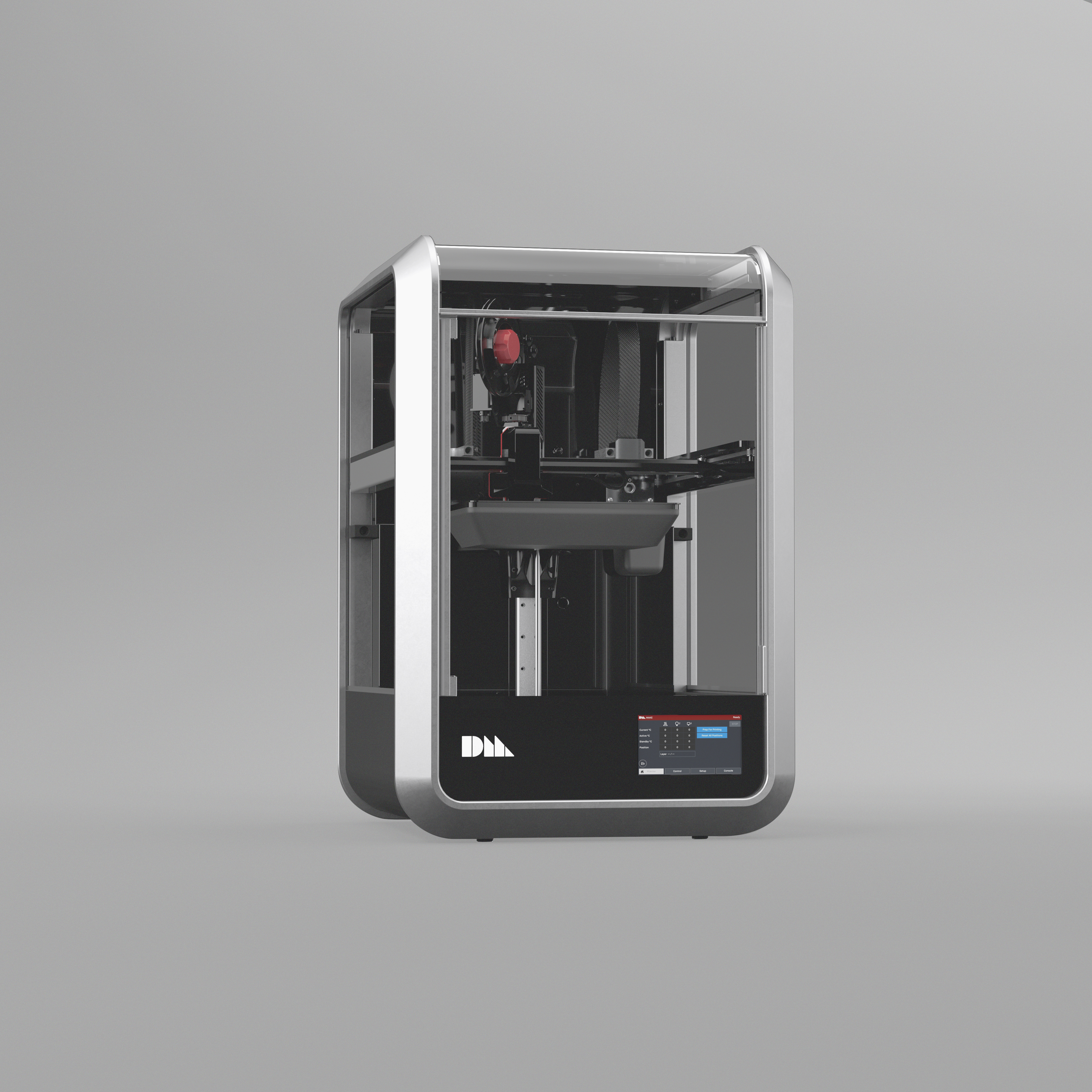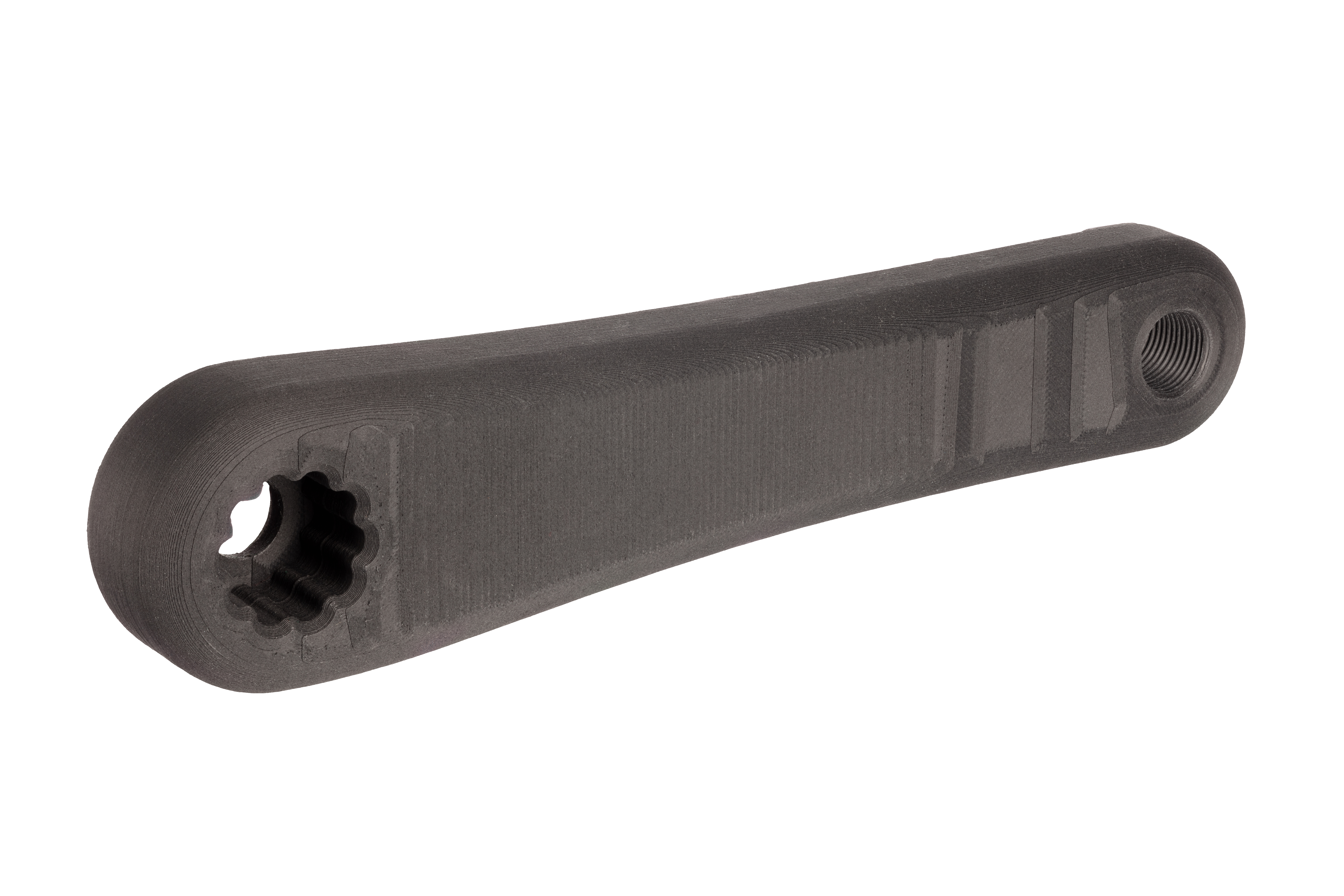Award winning 3D printer manufacturer Desktop Metal has announced the launch of Fiber, a new continuous fiber desktop 3D printer integrated with automated fiber placement (AFP) technology.
AFP is known as a method of manufacturing composite materials. Fiber’s technology combines FFF 3D printing with a miniaturized version of AFP, labeled micro automated fiber placement (μAFP), to print high resolution continuous fiber composite parts with reportedly superior levels of strength and stiffness. Ric Fulop, CEO and co-founder of Desktop Metal, explains:
“For the first time, Fiber printers combine the material properties of high performance AFP continuous fiber materials with the affordability and speed of a desktop 3D printer.”
Desktop Metal is releasing two versions of the new printer through a subscription service. The first, Fiber HT, starts from $5,495 per year, whereas the more affordable Fiber LT is available at $3,495 per year. The Fiber 3D printers are scheduled to ship in Spring 2020.

Crossing the bridge into plastic 3D printing
The Fiber 3D printers represent Desktop Metal’s entry into the polymer 3D printing market. Since its inception in 2015, the company has focused solely on metal 3D printing. It introduced its first two systems in April 2017, the Studio System and the Production System, which it has continued to upgrade since.
The Studio System uses the company’s proprietary technology called Bound Metal Deposition (BMD), a metal-polymer extrusion based process with furnace and sintering steps. Desktop Metal’s Production System on the other hand incorporates an inkjet and powder based method of metal 3D printing. The company has received a total of $438 million in funding to help further develop its metal 3D printing technology.
Desktop Metal’s decision to add a polymer 3D printing solution to its portfolio was driven by the need to create a desktop system for continuous fiber 3D printing. Speaking to 3D Printing Industry, the company stated that “Our vision is rooted in metal 3D printing technology, and it continues to be with the launch of both the Studio System and Production System. It was clear, however, that there is a void in the industry for advanced, continuous fiber 3D printing in a desktop system.”
To help develop its composite 3D printing technology, Desktop Metal therefore acquired Make Composites, a material company based in Massachusetts specializing in the manufacturing of small composite end-use parts. Make Composites’ AFP continuous carbon fiber technology has consequently been used to expand Desktop Metal’s 3D printing product portfolio. As a result, Dr. Konstantine Fetfatsidis, previously the Founder and CEO of Make Composites, has been appointed as Vice President of Composite Products for Desktop Metal.
“As a long-time user of multi-million dollar AFP technology for various development-to-production aerostructures programs, I am excited to bring AFP technology to the manufacturing floor for smaller, more complex parts,” commented Fetfatsidis. “This new print technology finally brings the material properties of AFP composites to small parts under 20 pounds, which would typically require expensive tooling, extensive manual labor, multiple consumables, and multi-step, long process cycles.”

Combining 3D printing with AFP technology
AFP technology, typically used in high end carbon fiber production processes, is an automated composites manufacturing process. It involves heating and compacting fiber reinforcements on typically complex tooling molds to produce continuous fiber composite materials. These materials are known for matching or surpassing the strength of metals while remaining lighter weight.
By combining μAFP with FFF 3D printing technology in its new Fiber systems, Desktop Metal aims to increase the accessibility of high performance continuous fiber materials produced by AFP machines, which are typically expensive. The company also aims to bring the benefits of the 3D printing process together with continuous fiber materials. Desktop Metal explains that composite parts are often used by manufacturers for prototyping, critical end-use parts that require high stiffness and fast lead-times, jigs and fixtures and lightweight components. They are mainly implemented in industries such as tooling, automotive, consumer electronics, sporting goods, medical, education/research and marine.

Both the Fiber HT and Fiber LT have a 310 mm x 240 mm x 270 mm build volume, and are designed to be arranged in print farm configurations of 6 or 10 printers. They come equipped with a robotic tool changer architecture, which allows the storage of up to four tools, including additional FFF heads for different materials. The systems can print parts with targeted continuous fiber reinforcement along critical load paths to create components that are reportedly up to 60 times stiffer and 75 times stronger than ABS plastic parts.
Material compatibility differs between the two 3D printers, however. The Fiber HT is compatible with continuous composites with less than 1 percent porosity and up to 60 percent continuous fiber loading with advanced matrix. This opens up the possibility of manufacturing parts with high grade materials like chopped carbon fiber filled PEEK and PEKK filaments. The system is also capable of 3D printing flame retardant parts that can withstand high temperatures up to 250 degrees Celsius, as well as components that are ESD compliant.
The Fiber LT on the other hand represents a more affordable solution for 3D printing AFP continuous composite parts. By contrast, the Fiber LT is able to process continuous fiber materials containing less than 5 percent porosity, suited towards PA6 thermoplastics. Both systems are available in a hardware-as-a-service subscription plan, with a minimum subscription of three years.
Subscribe to the 3D Printing Industry newsletter for the latest news in additive manufacturing. You can also stay connected by following us on Twitter and liking us on Facebook.
Looking for a career in additive manufacturing? Visit 3D Printing Jobs for a selection of roles in the industry.
Featured image shows Desktop Metal’s new Fiber 3D printer. Image via Desktop Metal.


